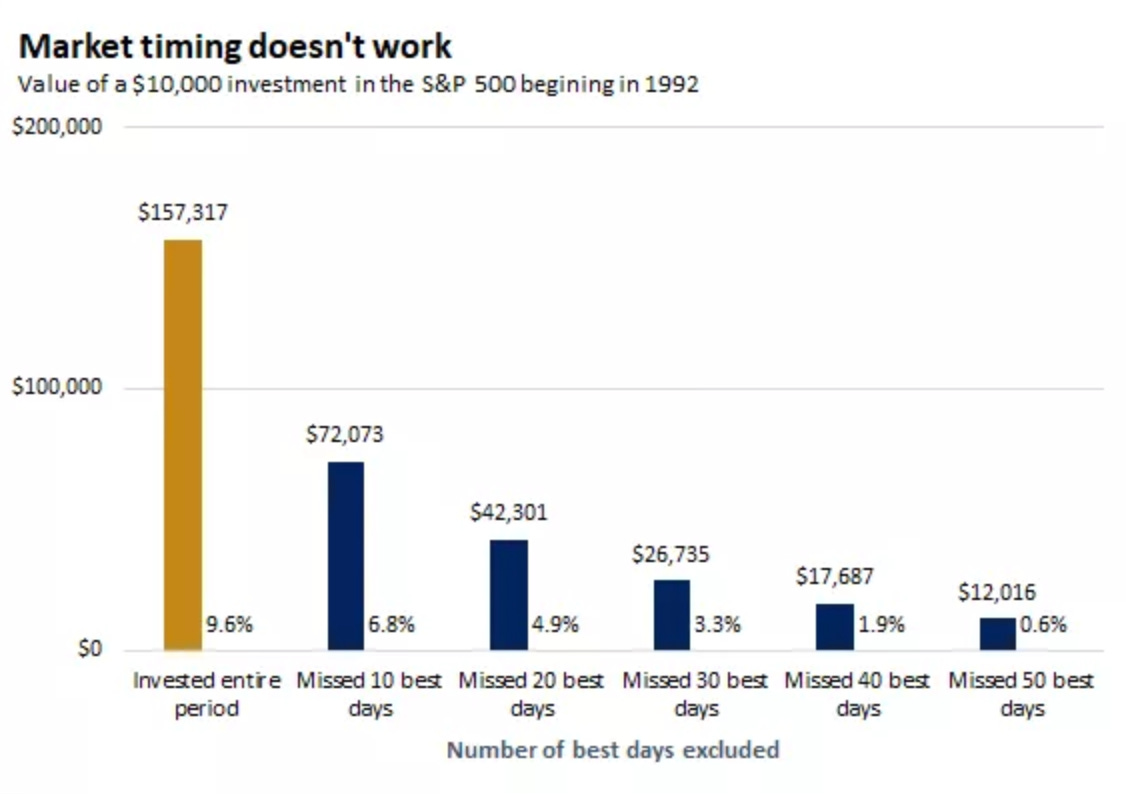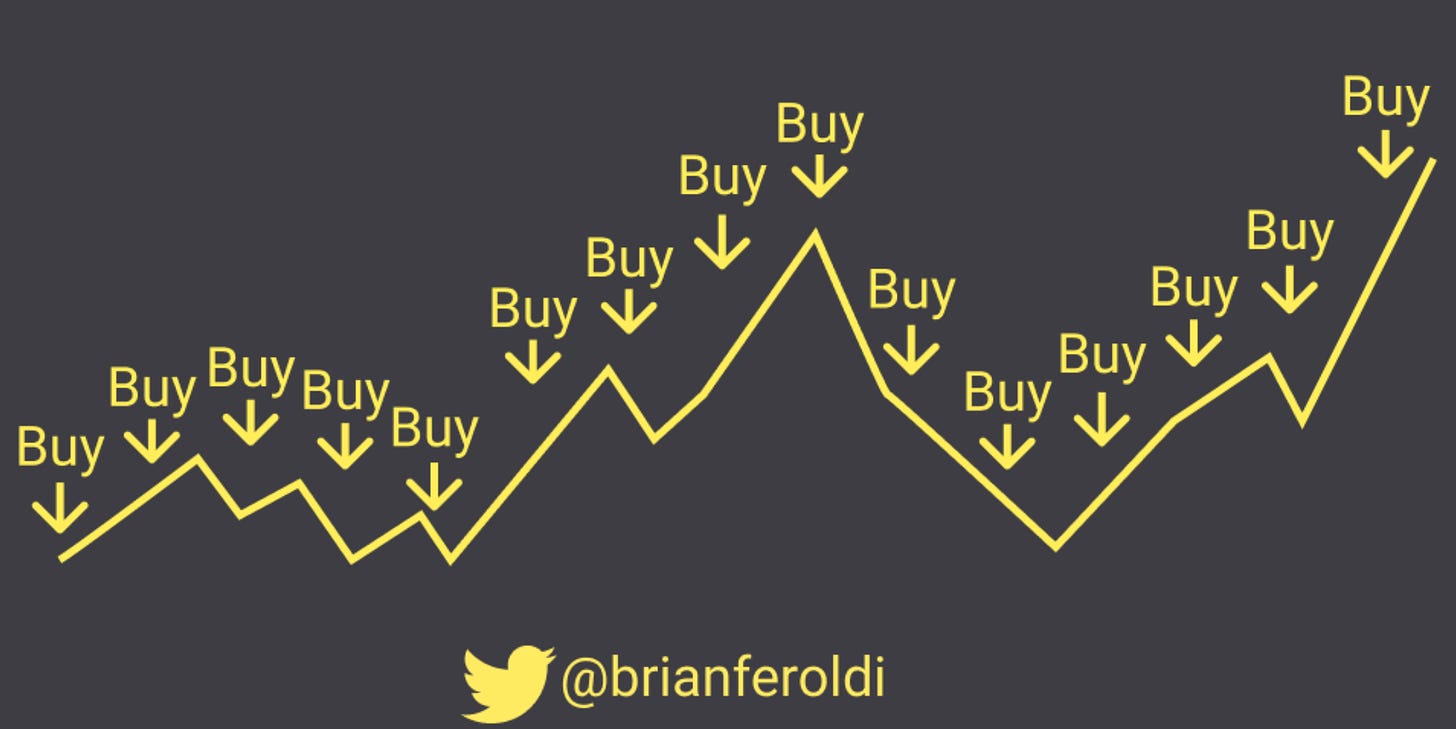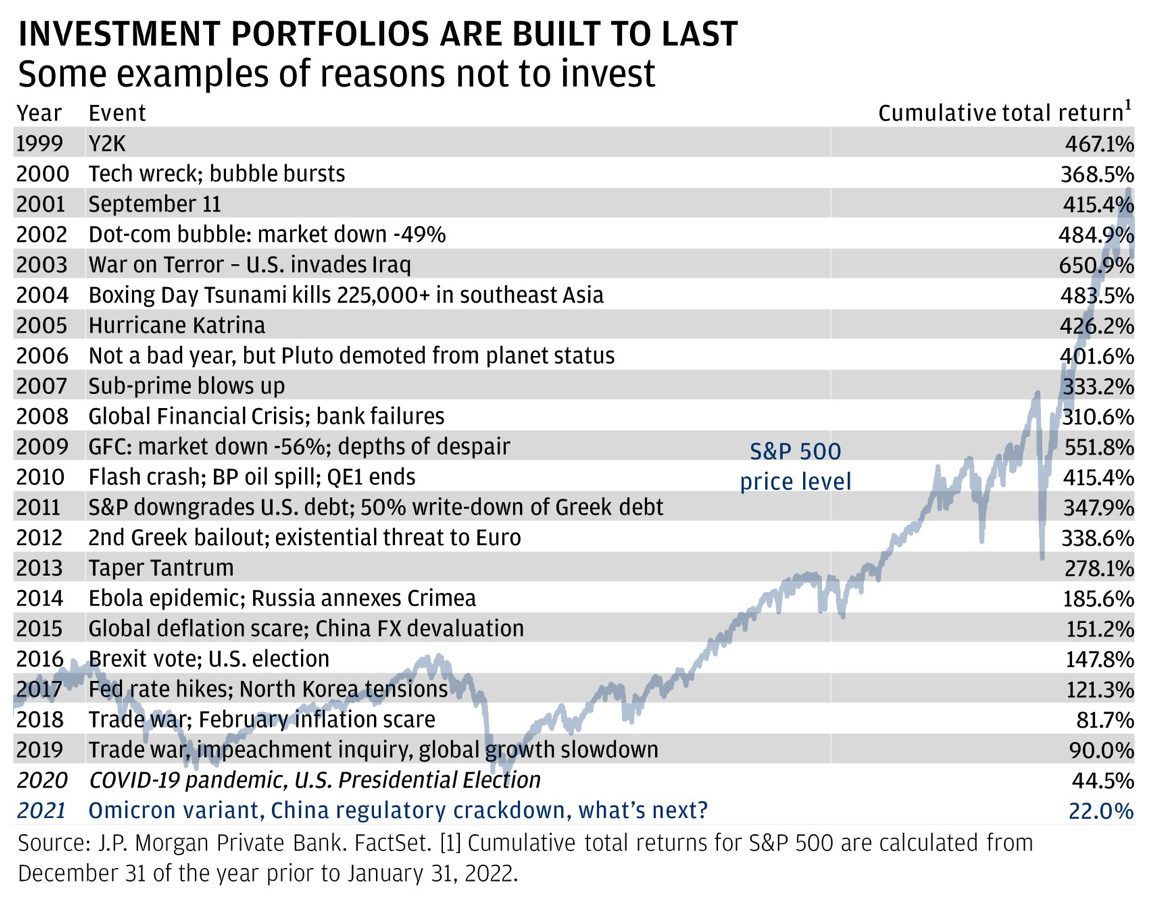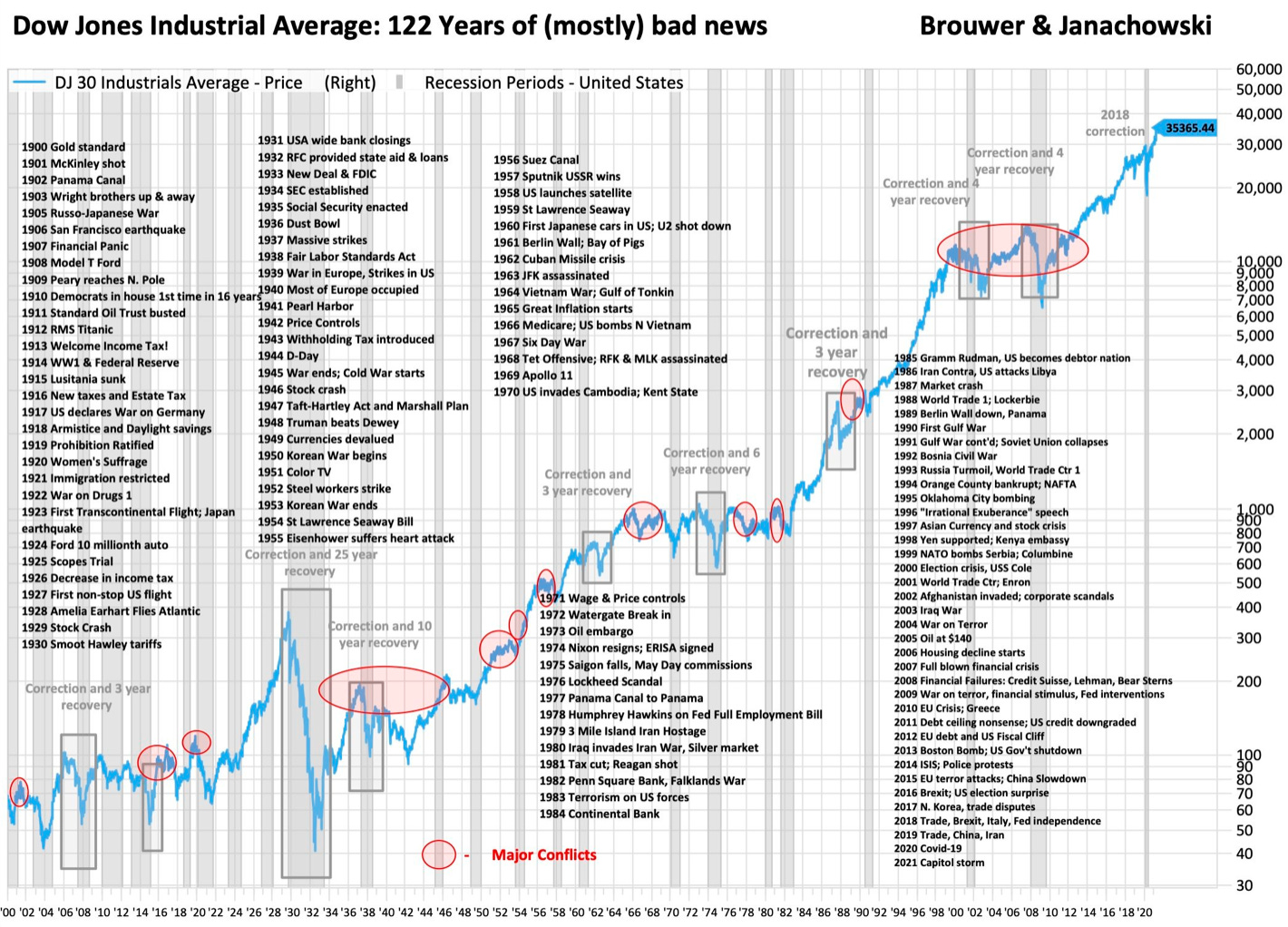The term “stay invested” is probably a phrase you’ve heard over and over again. Yet it’s often tough advice to follow. It’s easier said than done. Especially during bear markets. But it’s possibly the most important advice when it comes to long-term investing.
Market volatility is normal. Volatility can cause panic. Panic will tempt you to pull money out of the stock market in fear of losing more at the worst times. Usually at bottoms after a selloff has occurred in reaction to a bad event that happened.
Market timing just doesn’t work. It doesn’t work because nobody knows the future. You’re trying to predict events and what the economy or stock market will do. I wrote about this in a previous post called You Don’t Know, I Don’t Know, Nobody Knows.
To market time correctly you have to forecast suprise events before they happen. How do you do that? Essentially you have to spot on correct, twice. When to sell and then when to buy back in. A bell is never rung at the top or the bottom.
So unless you need the money that’s invested now, you’re putting yourself at risk of missing out on the market’s best days. It’s paper gains or losses until you actually need to use that money. If you’re years away from needing the money, why are you trying to jump in and out?
By trying to time the market you’re increasing the odds that you miss out on the best days. The best returns often happen when everything feels the worst. Missing out on just the 10 best days since 1992, a period of 30 years can prove to be very costly.

Let’s examine the stretch at the onset of the COVID-19 pandemic in March of 2020. This was about as volatile of a stretch as the stock market has ever seen.
March 9, 2020 -11.98% (3rd worst day in history)
March 12, 2020 -9.5% (6th worst day in history)
March 13, 2020 +9.29% (10th best day in history)
March 16, 2020 -7.6% (19th worst day in history)
March 23, 2020 was the stock market bottom. S&P 500 2,237
March 24, 2020 +9.38% (9th best day in history)
August 18, 2020 new all-time high during the COVID-19 pandemic. S&P 500 3,389
December 29, 2021 new all-time high S&P 500 4,793
From the low on March 23, 2020 to the all-time high on December 29, 2021 the S&P 500 gained 113%, not including dividends.
Nothing is ever as good as it seems and nothing is ever as bad as it seems. Stocks have historically recovered from every major downturn to deliver long-term gains. Time reduces the volatility of returns. The hard part is just continuing to buy each month.

Think back to all the major events that have happened since Y2K and the year 2000. Can you even recall them all?

There will always be “bad” news and there will always something to worry about next week, next month and next year. This will never change. History shows us that.

The Coffee Table ☕
I’ve read a lot about the fall and bank run of Silicon Valley Bank. The best article I’ve come across which I think does the best job of explaining it was by Marc Rubenstein. The Demise of Silicon Valley Bank.
I enjoyed Joy Lere’s post called Burned. She talked about burnout and that’s really something that isn’t talked about enough. She dissected reasons or causes and then ways to deal with it. An informative and helpful read for really anyone.
Monevator has a good post entitled Is cash in an investment account a money maker for you or for your broker? This will make you think and then evaluate what you’re doing in your investment accounts.
Congratulations to my friend Sam Ro and his Substack TKer for winning the 2022 SABEW Best in Business Award for the newsletter category, small division. If you’re not reading and subscribing you’re really missing out.
Thank you for reading! If you enjoyed Spilled Coffee, please subscribe and/or give a gift subscription for others.
Spilled Coffee grows through word of mouth. Please consider sharing this post with someone who might appreciate it.


